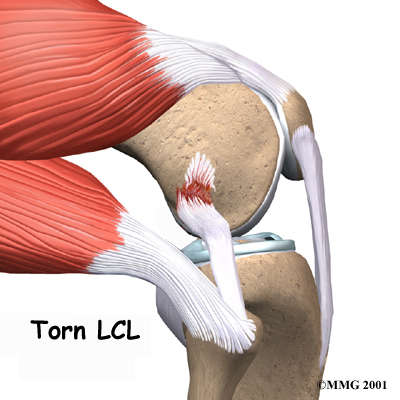Non-surgical Rehabilitation
When you begin your physical therapy, our initial treatments for a collateral ligament injury will focus on decreasing pain and swelling in the knee. Rest and anti-inflammatory medications, such as aspirin, can help decrease these symptoms. You may need to use crutches until you can walk without a limp.
Most patients receive physical therapy treatments for collateral ligament injuries. Our physical therapists may treat the swelling and pain with ice, electrical stimulation, and rest periods with your leg supported in elevation.
We will use exercises to help you regain normal knee movement. Range-of-motion exercises are normally started right away with the goal of helping you swiftly regain full knee movement. This includes the use of a stationary bike, gentle stretching, and careful pressure applied to the joint by our physical therapist.
Exercises are also used to improve the strength of the quadriceps muscle on the front of the thigh. As your symptoms ease and strength improves, your STAR Physical Therapy physical therapist will guide you through advancing stages of exercise.
When you get full knee movement, your strength is improving, and your knee isn't giving way, you'll be able to gradually get back to your work and sport activities. We may prescribe the use of a functional brace for athletes who intend to return quickly to their sport. These braces support the knee and protect the collateral ligaments.
Although recovery time varies, minor sprains of either the MCL or LCL often get better within four to six weeks. Moderate tears should rehabilitate within two months. Severe MCL tears require up to three months. Patients who are still having problems after three months may need surgery. Severe tears or ruptures of the LCL are the trickiest, because they tend to leave the knee joint the most unstable, and patients with this condition typically don't do well with non-surgical care. Patients who continue having periods of swelling or instability in the knee may also need surgery to correct their problem.
STAR Physical Therapy provides services for physical therapy in Fairport and Rochester.
Post-surgical Rehabilitation
Rehabilitation proceeds cautiously after surgery of the collateral ligaments, and the treatments our patients receive vary depending on the type of surgical procedure that was used. Some surgeons have their patients use a continuous passive motion (CPM) machine after surgery to help the knee begin to move and to alleviate joint stiffness.
Most patients are prescribed a hinged knee brace to wear when they are up and about. Surgeons occasionally cast the leg after reconstruction surgery of the LCL.
Patients are strongly advised to follow the recommendations about how much weight to place on the leg while standing or walking. After a ligament repair, you should put little or no weight on your foot when standing or walking for up to six weeks. Weight bearing may be restricted for up to 12 weeks after a ligament reconstruction.
When you begin your STAR Physical Therapy post-surgical therapy program, the first few treatments are designed to help control the pain and swelling from surgery. Our goal is to help you regain full knee motion as soon as possible.
Our physical therapist will also work with you to make sure you are using the crutches safely and only bearing the recommended amount of weight while standing or walking. As the rehabilitation program evolves, we will choose progressively more challenging exercises to safely advance your knee's strength and function.
Ideally, you will be able to resume their previous lifestyle activities. However, some patients may be encouraged to modify their activity choices, especially if an allograft procedure was used.
At STAR Physical Therapy, our goal is to help you keep your pain under control, ensure safe weight bearing, and improve your strength and range of motion. When your recovery is well under way, regular visits to our office will end. We will continue to be a resource, but you will be in charge of doing your exercises as part of an ongoing home program.
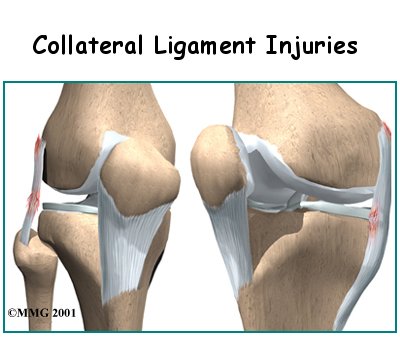
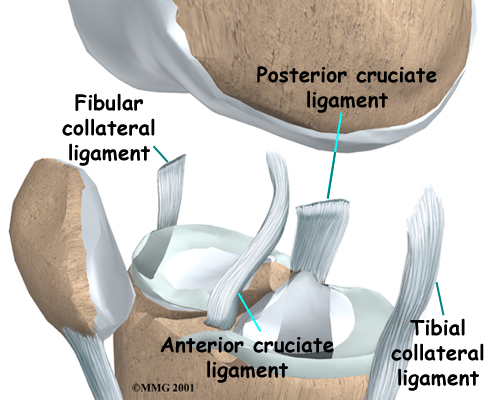
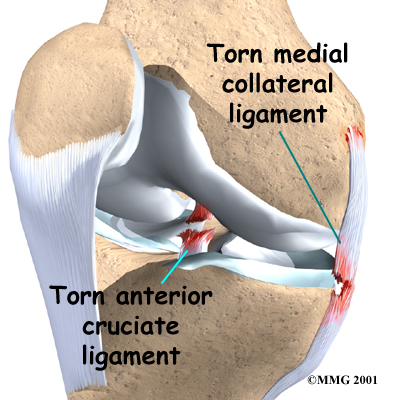
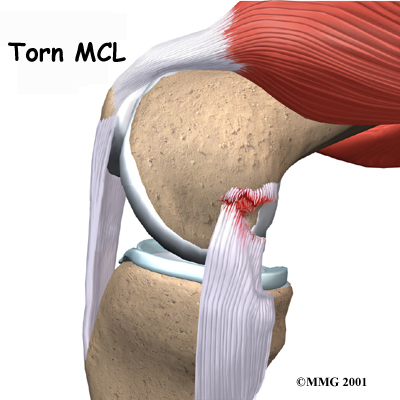 How do collateral ligament injuries occur?
How do collateral ligament injuries occur?